Reflections From Two Pop-Up Cities
Talking tech in Edge Esmeralda, dancing techno in Burning Man
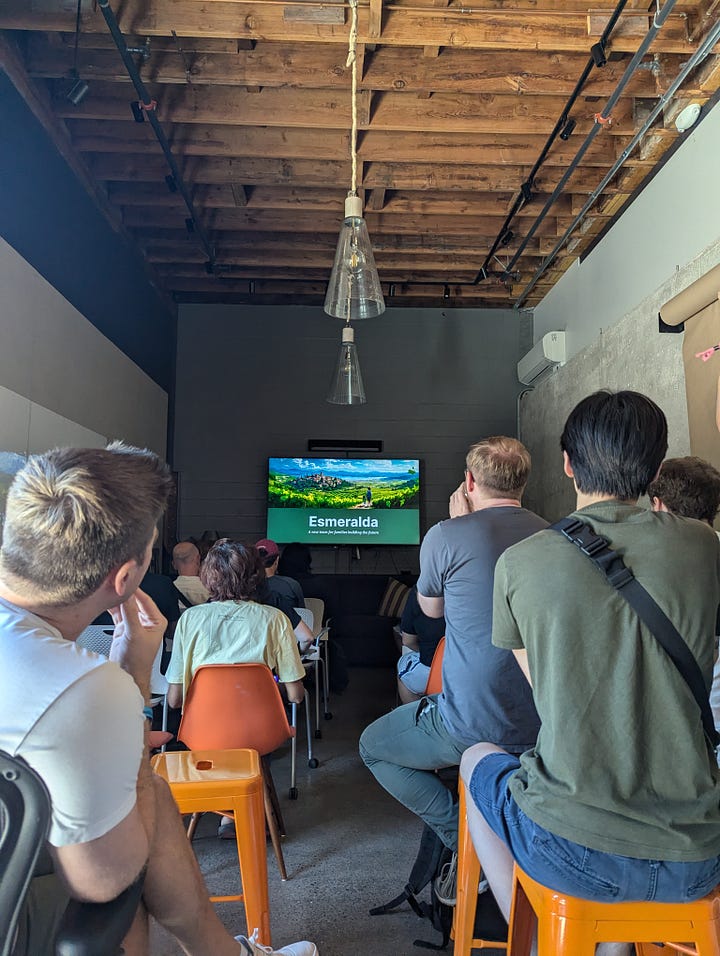
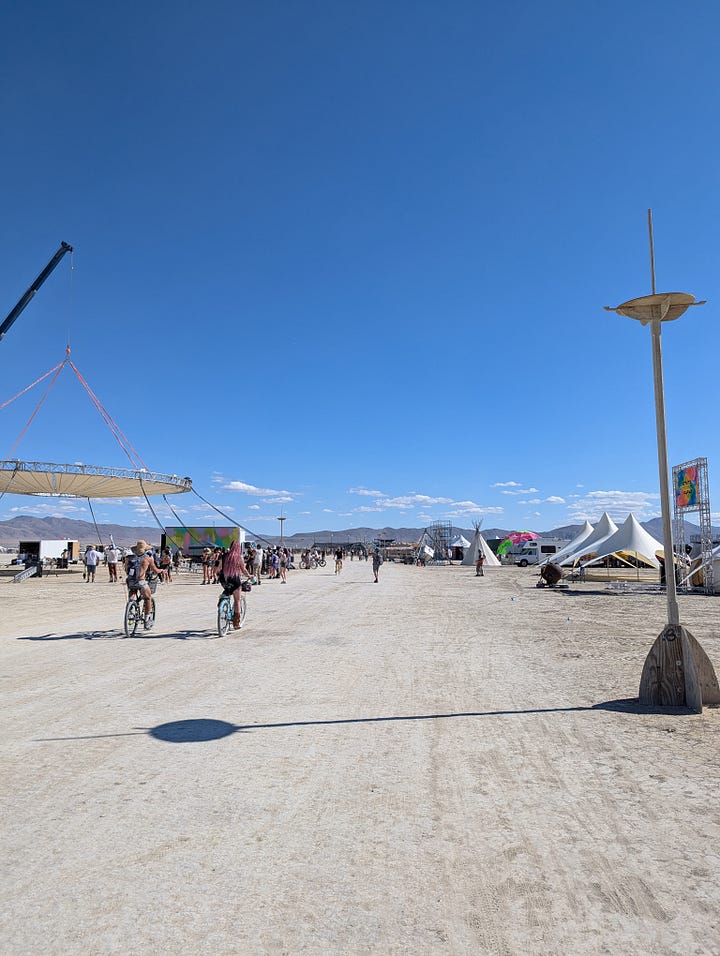
This summer, I was lucky to attend two pop-up cities: Edge Esmeralda in California, and Burning Man in Nevada.
The former I forced my husband to go, the latter he forced me. It was a good balance and provided good insights into the world of pop-up cities.
“Why are you using pop-up city as if we all knew what it meant?”, you might rightly ask.
Fair. Let’s start with what a city is.
A city is a permanent human settlement in a particular geographic place. It has a specific weather, flora, fauna, topography, etc. It has an economy created by its inhabitants and a shared physical infrastructure. There are institutions that govern said city and provide citizens with services like parks, waste disposal and lighting.
Yet, a city is more than that. It has a culture, a vibe, even a soul.
One of my favorite definitions is by Lewis Mumford, who thought of the city as a social institution that embodies the culture and values of its time. It’s more than a physical place, he argues, it’s a stage where human experiences unfold. He called it a “theater of social action”.
A pop-up city is a brief theater of social action. It has a beginning and an end.
Edge Esmeralda
Edge Esmeralda went on for a month in Healdsburg, a small, beautiful town in Sonoma County, 90 minutes from San Francisco. The project was born out of of two complementary visions: Edge Cities + Esmeralda.
Edge Cities was created by Janine Leger and Timour Kosters. They were behind the pioneer popup citiy Zuzalu (organized with Vitalik Buterin, a co-founder of Ethereum and the only person I’d accept as dictator). They gathered 1,000 techno optimists for two months in a resort in Montenegro. Out of Zuzalu, dozens of projects building or enabling new types of communities have sprouted.
Esmeralda, envisioned by Devon Zuegel, aims to be a modern-day Chautauqua—a walkable, beautiful town in California with a close-knit community buzzing with intellectual life.
Joining forces, Devon, Janine, and Timour launched Edge Esmeralda, attracting hundreds of participants throughout the month to live and work in Healdsburg. There was a co-working space, daily community dinners, and dozens of informal talks and conversations around AI, crypto, longevity, and new cities.
Burning Man
Burning Man occurs every year for a week before Labor Day in a remote desert in northern Nevada.
And no, reader, it’s not a music festival.
It’s a literal city with thousands of camps organized around themes and interests (or friendships). We were seven people in our beautiful Camp Piper, but there are camps with hundreds of people.
Whatever you can think of, there’s a camp for it. I saw a camp functioning as a public library (where I checked out a Chinese poetry book), several had a burlesque theme, one offered bagels with lox every morning, another built a Western-style saloon and gave out bourbon. There was even a queer Satanist camp because why not?
Burning Man was created in 1986 by Larry Harvey and Jerry James on Baker Beach in San Francisco as a spontaneous act of community gathering in which they burned a wooden “man”. It symbolized freedom and letting go of emotional baggage. Although they had no grand intentions at the time, Burning Man has grown into a cultural phenomenon where more then 50,000 people attend each year.
Both are extremely different projects but both create the conditions for people from all over the world to come and live together for a short time around a shared experience.
I could go on and on but I know you’re busy, important people, so for now I want to focus on some initial reflections.
Let me know what you want me to write next, though.
1. Being Alone Is the Weird Thing
Marx was wrong about most things but his idea of alienation is very relevant today.
In Marxist theory, alienation refers to the condition in capitalist (I would argue in all) societies where workers become estranged from the products of their labor, the labor process, their own essence, and other people.
Modern life has provided us with so much comfort and wealth. That is undeniable. Yet we feel disconnected, overwhelmed by screens, emails, debt, deadlines…
We’ve become estranged from essential aspects of our lives. More than ever, we feel a need for nature. A need for working with our hands. A need for community and belonging, for the rituals and pleasures of living with other people. A need to live with more purpose and intention.
At both pop-up cities I was reminded of these needs. We just want to connect with other humans and feel part of a community.
Waking up and sharing breakfast with my campmates while we lounged and talked our nights was a highlight at Burning Man. Getting tipsy while getting to know new friends at a wine bar in downtown Healdsburg was more meaningful to me than half of the talks I attended at Edge Esmeralda (and there were some really good ones).
If you think about it, we’ve lived in smaller, more local communities for most of human history. We needed to live in strong social units out of necessity. Now, we’re realizing that we need that strong social unit, not to survive physically, but to flourish emotionally.
The weird thing historically has been to not have a community, to be alone.
That’s why more and more people are reconsidering their jobs and their lives. They are moving back home, they’re bringing their families to a new city, or they’re buying property with their friends.
2. The Importance of Place
Re-thinking communities inevitably brings us to physical places: cities, towns, neighborhoods.
Americans especially are confronted with their bad urban planning. Why do we have endless suburban sprawl? Why do we need to use the car for everything? Wouldn’t it be cool if I could walk to my friend’s house, or we could both bike to a coffee shop 5 min away.
The value of walkable, dense, beautiful neighborhoods, towns and cities becomes apparent.
Not only that, it’s clear that the environment shapes culture and advances human potential.
Having a neighborhood or city with a dense network of third places (coffee shops, co-workings, co-living houses, cultural centers, libraries) where curious, driven people hang out is a powerful agent for innovation. Just look at the badly named “Cerebral Valley” in San Francisco.
You can accelerate progress in any field if you have people around that are passionate about the same shared ideas.
There’s an irony to the different challenges Europeans and Americans face when considering their environment.
Europe has the beautiful towns and walkable cities already. It has charming, historic places with great restaurants and parks and local cafes. But it lacks the people with drive and ambition who want to innovate.
The US lacks those beautiful cities and towns (except for a few) but has the ambitious people and the capital.
Why is it so hard to have both? How can we create more beautiful, walkable, comfortable places that also have ambitious, passionate people of all ages?
3. From Online to IRL Communities
At Edge Esmeralda, I heard the frame of software vs. hardware in establishing new cities.
Software is the people, network, culture, the set of values, and the ideas that attract them.
Hardware is the actual physical space, the regulations, and infrastructure: buildings, urban design, parks, etc.
Hardware is evidently the bottleneck as there are complex dynamics with the environment, politics and capital. It’s a high regulation space where sometimes opposing interests have to be met.
Before, the software and the hardware were merged. We met people based on where we were. Our co-workers at the office, other children’s parents at school, our friends from university.
Technology allows us to transcend geography and meet people from all over the world who share our passions and ambitions. The software has moved online.
And now these online communities are questioning the status quo. Why are there no new cities? Why does our community life need to be solely defined by whoever is near— be it at work, or at school?
Don’t get me wrong, building a community around our neighbors and co-workers is wonderful and important, but it shouldn’t be the only way.
Edge Esmeralda was an experience thought of and organized by internet people: those who are able to work and earn their income through the internet. I basically found out about it because I follow Devon on Twitter and I had read her stuff.
If our online communities share so much of our interests and values, let’s instantiate a place in the real world. That, to me, was the experiment Edge Esmeralda ran.
4. The Power of Culture
This super nice, aproned gentleman stopped strangers on bikes at 2 am to share bags of just-made popcorn. He, nor any of his popcorn friends, got paid. They actually had to bring everything themselves, including the very cute stand.
Why are they doing this? Well, this is a snapshot of how culture influences everything that happens at Burning Man.
Culture defines what is deemed normal or correct. Hence the name “norms”, from Latin norma, i.e rule.
In Burning Man “real-world” rules are inverted (or at least subverted) through the 10 principles. Things like radical inclusion, gifting, Leave No Trace, and radical self-expression are the backbone of the very strong and very peculiar culture there.
Instead of paying for stuff, you get gifts.
Instead of wearing jeans, you might decide to rock a kimono, a kilt, or be naked.
Instead of relying on others, you are responsible to bring your own shelter, food, and drinks.
When you have such a powerful culture, rules are rarely needed. And this is especially impressive for a city of such scale. It facilitates organization and social life without enforcing a specific way of behaving.
The principles establish the rules of the game, but everything else about the game is open to experimentation. I saw drones, enormous LED-lit stages, cellular towers, orgy domes, and flame-shooting cars.
A strong culture also acts as a filter. People from all over the world decide to go because the principles resonate with them. Once there, if you don’t like it, you are welcome to leave.
Yet, the ones who like it, love it. Committed burners become stewards of the culture and allow it to last through time.
So, once a year, people abandon their routines, go all out and co-create a giant spectacle where they can party all night (of course), but more importantly, where they can be themselves in all their interesting quirks and features.
5. Against the Default World
Burners often call the world outside Burning Man the “default world”. The world where they commute to work, stand in line at the supermarket, and pay taxes.
What I saw in both pop-up cities is people wanting to transform how the default world is.
In Edge Esmeralda I met so many people thinking of practical ways to change it. The entire experience was all about living with more intention among like-minded people.
Devon wants to create a new permanent town in California where close-knit, multigenerational living is the norm.
The founders of Cabin are creating a network city with permanent local villages spread all over the world where people can live for a month or five years.
I met a guy planning to build a walkable village in Puerto Rico. Another one wants to create a REIT to buy houses and set up co-living communities in San Francisco.
Burning Man is already a real-world example of what a different city can be like. A city where self-expression and celebration is the norm. It’s like asking the question, what would happen if we lived our lives with much more creativity and camaraderie?
My overall reflection is how different a place can be if people act with more intention, and agency on how and with whom they share their lives.
There is the default world of normalcy. Where luck defines if you grow up in an amazing, vibrant city or town, where you feel connected and inspired by your friends and family.
Or, like most, if you are in a place that feels average and uninspired. Where friends and family are overwhelmed. Where so much potential is left at the table, unexplored.
My deep belief is that people are naturally curious and creative, but those qualities are lost when confronted with the “real world” (through traditional schooling, boring jobs, expectations from other people, etc.)
Imagine what would happen if we create a world with more room for exploration, curiosity and drive?
You don’t have to move to another city or country to have this. You can start the change yourself. Talk to other people and collaborate with them, get involved in your local community, try to improve your neighborhood.
How good or bad the default world is, depends on us.
postscript 📮
One thing that I’m still unsure of (after many discussions with my husband) is if Burning Man is successful because it is only a short amount of time. The problem with cities (and countries) is that people cannot opt-in or opt-out so easily, or at all.
Anywho, let’s talk:
Have you been to any other pop-up cities or events like these?
What are other places where you find or maintain your community life?
Do you feel more or less lonely with social media?
How’s your day going?

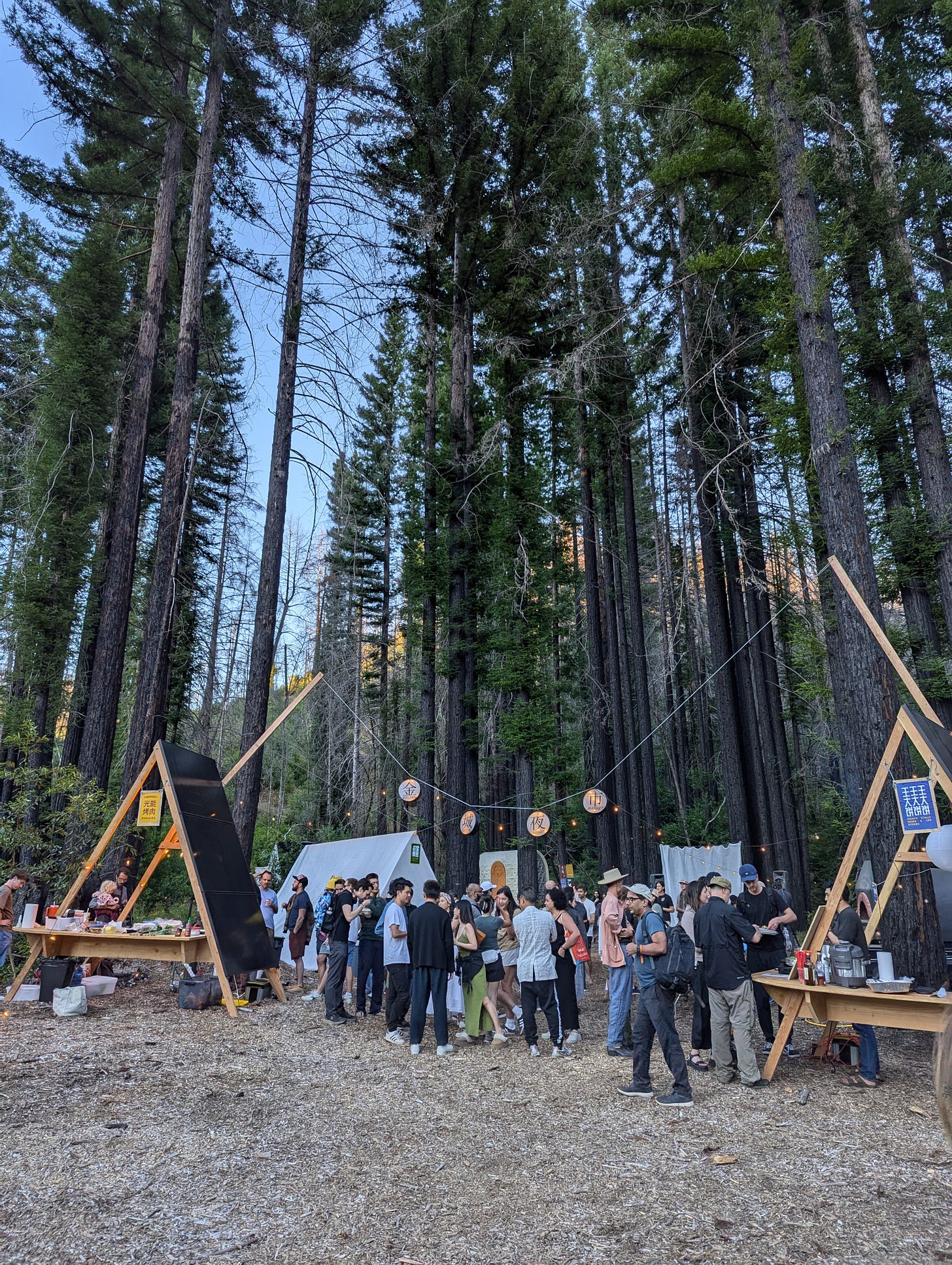
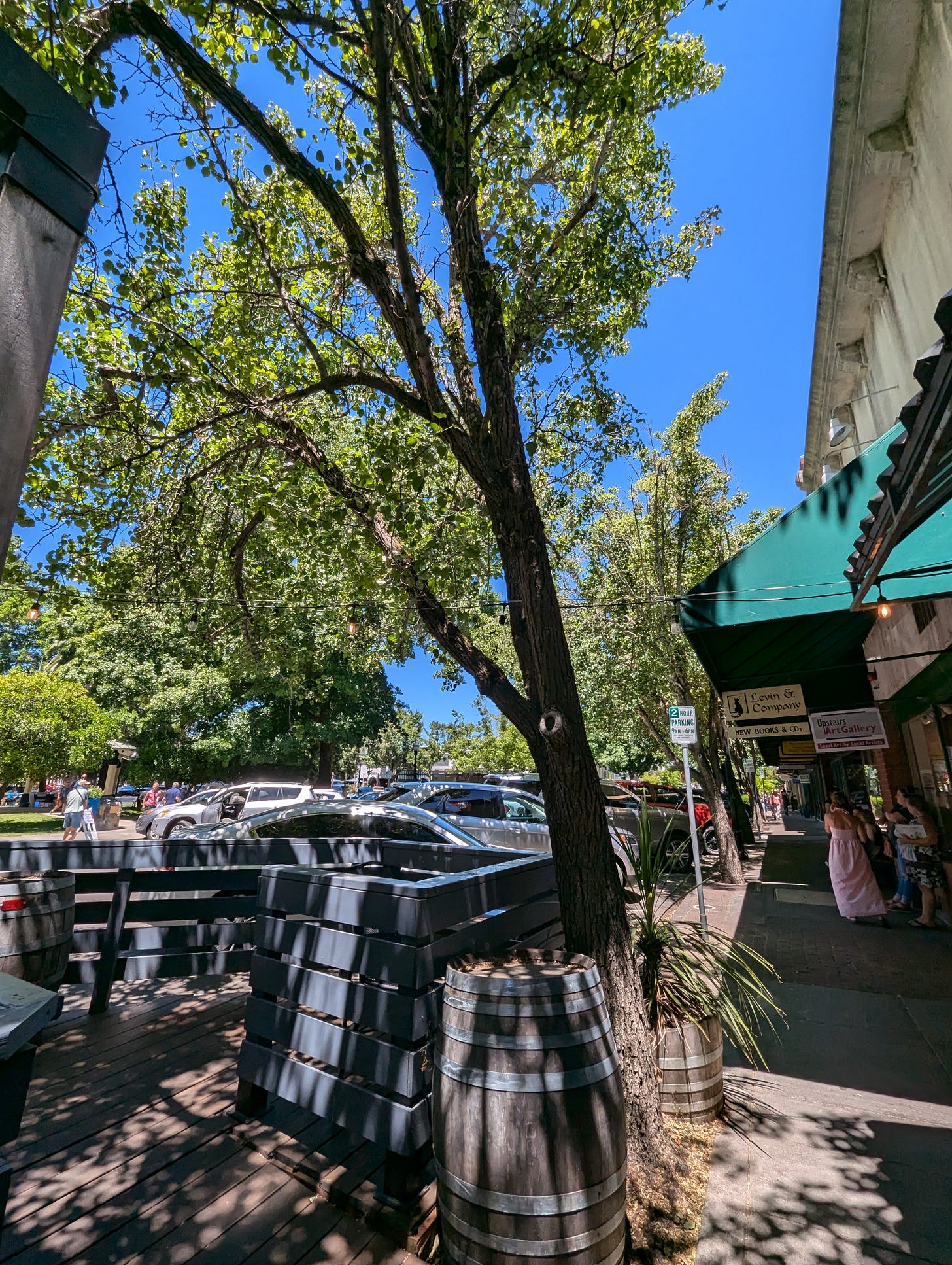
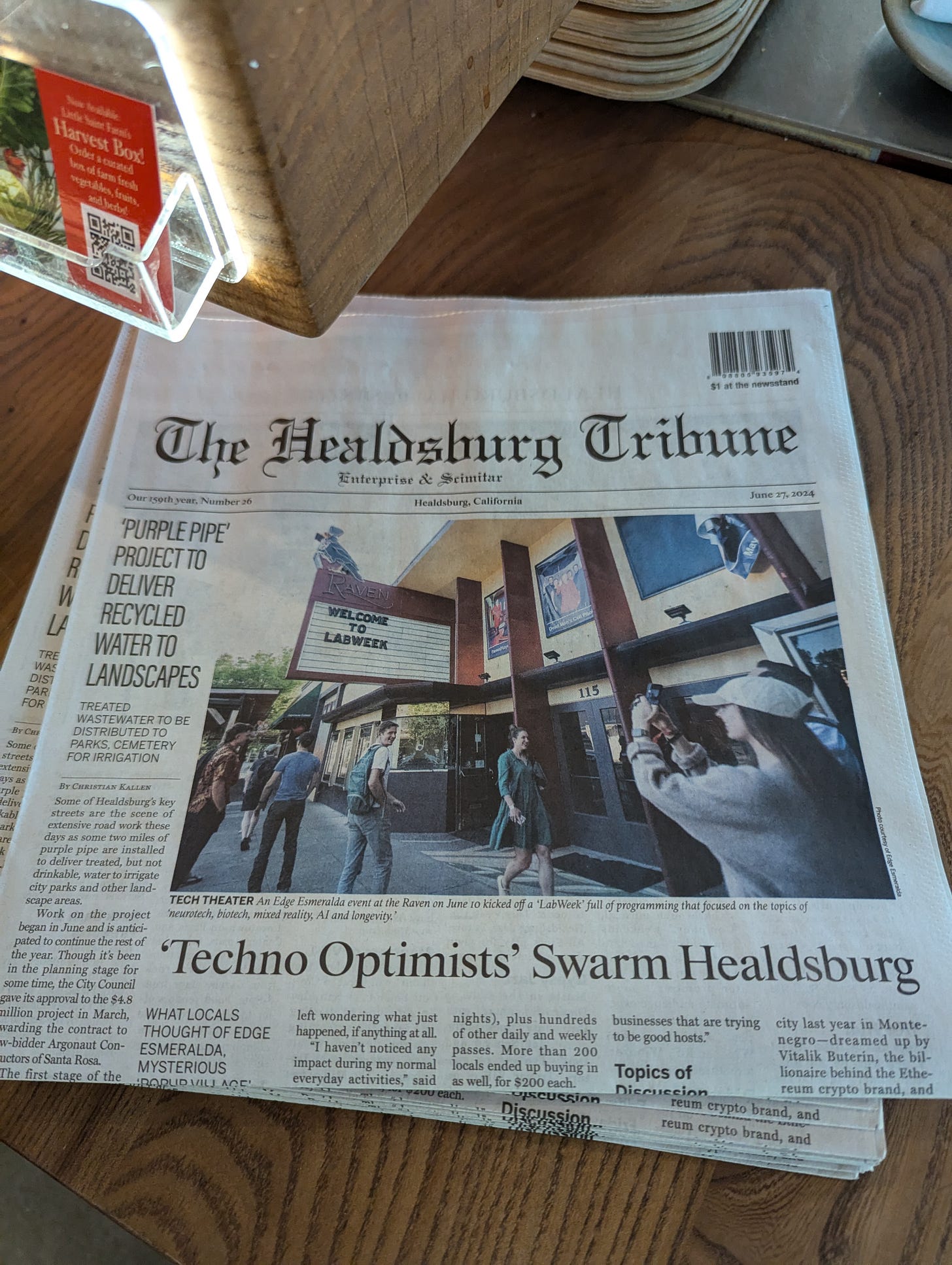
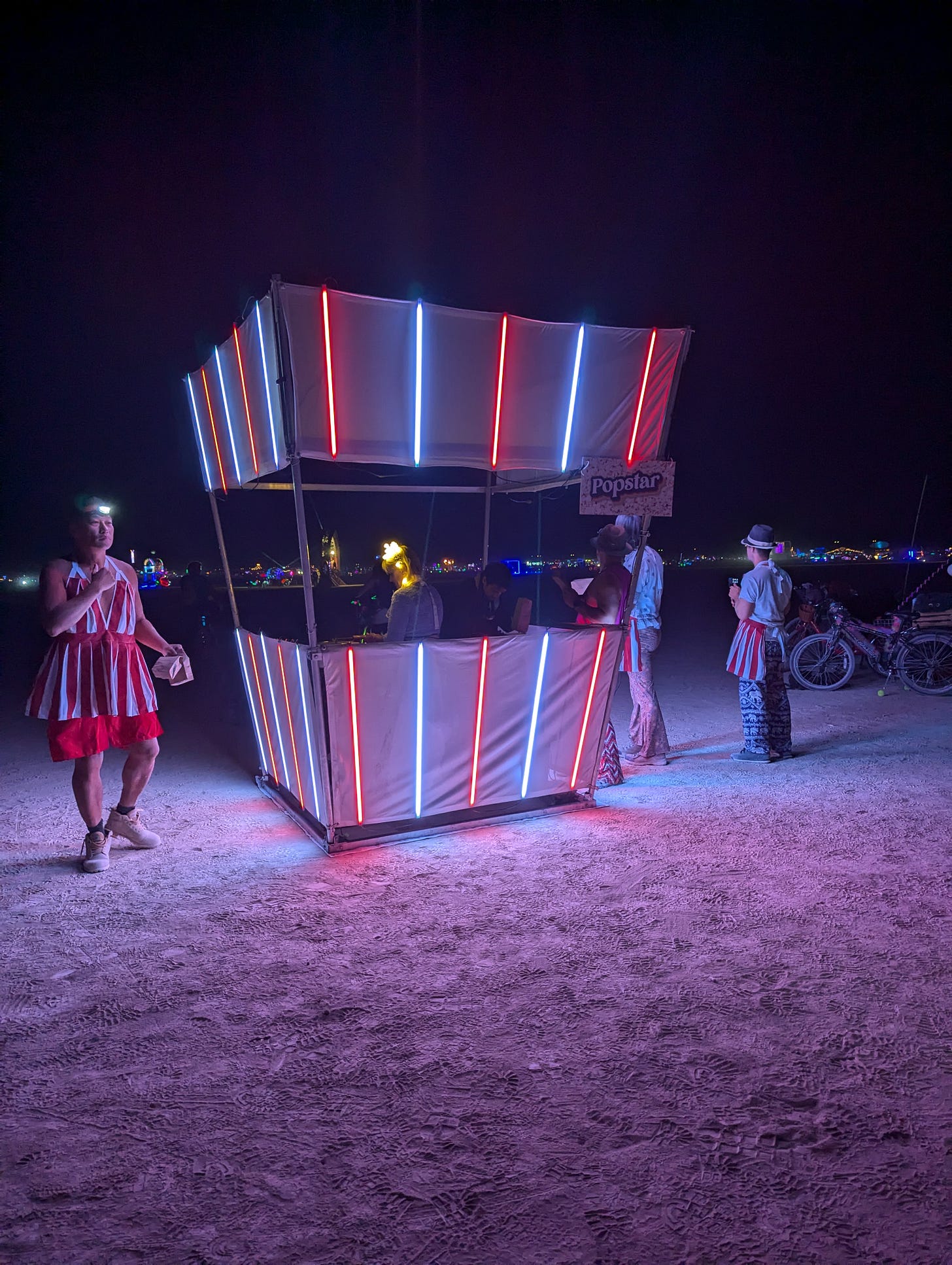
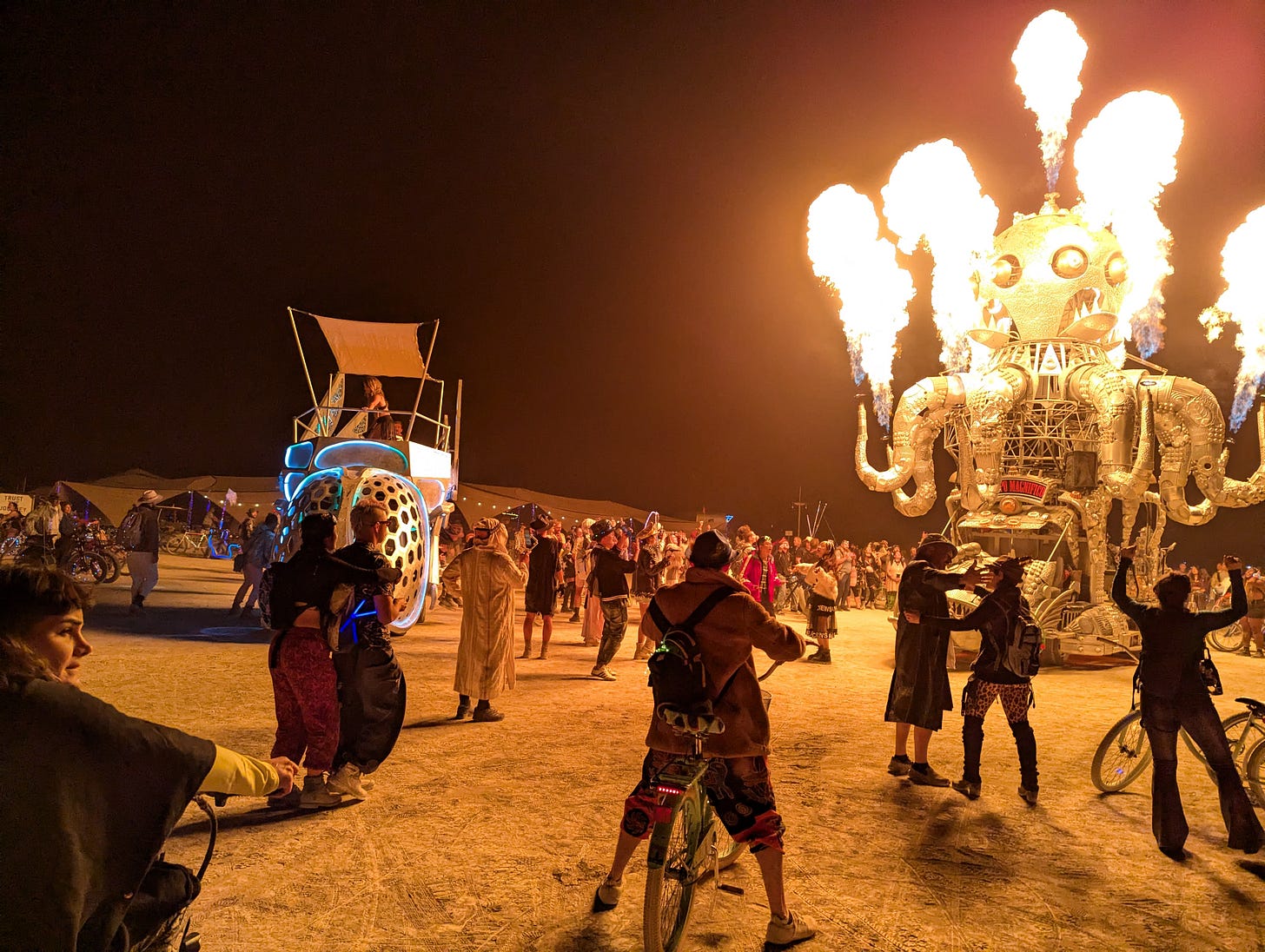
I love the Mumford quote! It makes me think that maybe pop-up cities embody the values of a time slightly ahead of their own.
And to that end, I agree that they probably work because they are temporary and novel. If they continued endlessly, there would be some kind of curiosity fatigue. But I actually don’t think that’s a knock on them—I think that’s their function in a way!